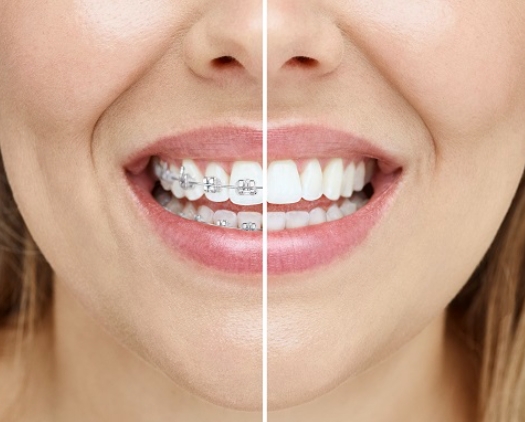
Clear aligners and braces are both popular orthodontic treatments that can help correct misaligned teeth and improve your smile. While they both work towards the same goal, they differ in terms of appearance, comfort, and maintenance. So, which one is right for you? In this blog, we will discuss the differences between clear aligners and braces to help you make an informed decision.
What are Clear Aligners?
Clear aligners are a modern orthodontic treatment that uses transparent, removable aligners to gradually move your teeth into the desired position. The aligners are custom-made to fit your teeth and are changed every two weeks to maintain the pressure required to shift your teeth. Clear aligners are often preferred by patients who are looking for a more discreet and comfortable alternative to traditional braces.
What are Braces?
Braces, on the other hand, are a more traditional orthodontic treatment that uses brackets and wires to gradually move your teeth into place. The brackets are attached to the teeth, and the wires are adjusted over time to apply pressure and move the teeth. Braces are a highly effective treatment for correcting complex dental issues and are often recommended for patients with severe misalignment.
Appearance
One of the main advantages of clear aligners is their appearance. The transparent aligners are virtually invisible, making them a more discreet option than braces. This is particularly beneficial for adults who may feel self-conscious about wearing braces in professional or social situations.
Braces, on the other hand, are more noticeable due to their metal brackets and wires. However, they do come in a variety of colors, which can make them more appealing to younger patients.
Comfort
Clear aligners are made of a smooth, flexible plastic material that is gentle on the gums and mouth. They are also removable, which makes eating and brushing easier. Braces, on the other hand, can cause discomfort and irritation due to the brackets and wires rubbing against the cheeks and gums.
Maintenance
Clear aligners are removable, which makes them easier to clean than braces. You can remove them to brush and floss your teeth, and you can also clean them with a soft-bristled toothbrush and lukewarm water. Braces, on the other hand, require more maintenance, as food particles can get stuck in the brackets and wires. Special tools, such as floss threaders and interdental brushes, are needed to clean between the brackets and wires.
Treatment Time
The length of treatment time for clear aligners and braces varies depending on the severity of the dental issues being corrected. The treatment time is comparable but for simple cases, it can be faster using clear aligners.
Cost
The cost of clear aligners and braces varies depending on the complexity of the dental issues being corrected and the length of treatment. In general, clear aligners tend to be more expensive than braces. However, many dental insurance plans cover orthodontic treatment, which can help reduce the overall cost.
In summary, clear aligners and braces are both effective orthodontic treatments that can help correct misaligned teeth and improve your smile. Clear aligners are a more discreet, comfortable, and easier to maintain option, while braces are a more traditional and effective option for correcting complex dental issues. The right treatment for you will depend on your individual needs and preferences, and you should contact us to determine which option is best for you.





